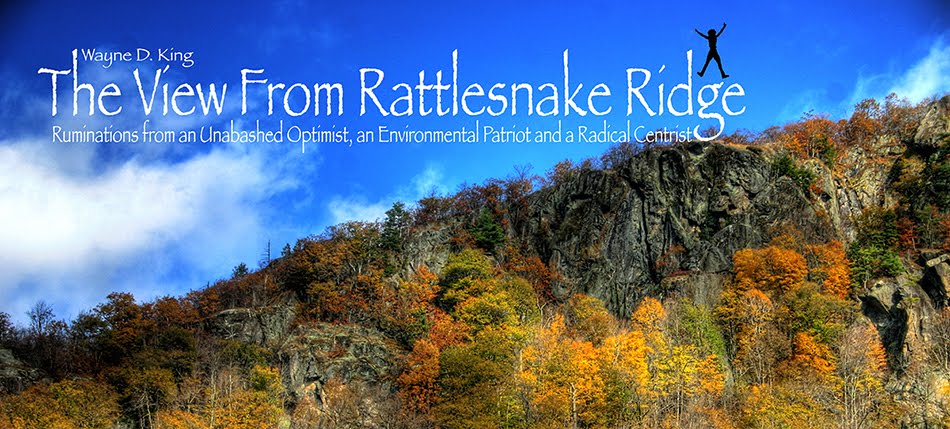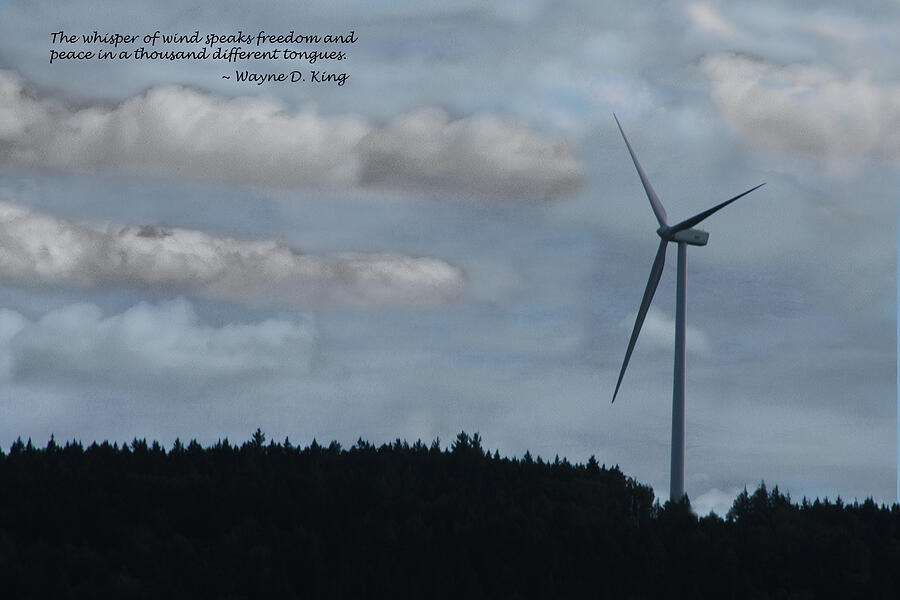 |
| Storm Over Lupine |
We the People
Re-defining Bi-Partisan in the Post-Trump Era
My morning ramble in the valley between Rattlesnake Ridge and the Waterville Range today was a troubling cascade of thoughts and revelations.
In the first month, following the election of a new president, it felt as if we had turned a corner. Of course, we knew that there would be some post-Trump hangover but the almost immediate sense of a pending return to normalcy gave us a false sense of security.
Today it is all beginning to feel like the calm before the storm.
I, like many others, had hoped that Joe Biden’s election would empower the saner minds among elected Republican leaders to quickly return to some level of normal. The events leading up to and following January 6, 2021 quickly demonstrated that was not to be.
Remembering that the JFK library gave an annual “Profiles in Courage Award” I took a quick look at their website this morning and noted - with some satisfaction - that they had given it recently to Mitt Romney. I’m hoping that Liz Cheney will be added to that list soon. But the number of elected Republican leaders who have stepped forward to attempt to right our ship of state has been thoroughly discouraging and reflects not only the level of fear of Donald Trump among Republican elected officials but also a growing disconnect between the people of this country and their elected officials in both parties.
Now I’m no Pollyanna when it comes to politics. I’ve been there and endured the slings and arrows from both my own party and those of the other, especially when elected “leaders” see an opportunity to take advantage of a perceived weakness in the other party, this despite the fact that - at least until recently - 95% of the work that actually takes place legislatively at every level is generally without any hint of partisanship at all. However, until now even that final 5% usually represented genuine, honest disagreement, more commonly over means not ends. Republicans and Democrats saw one another as the “loyal opposition” not the enemy.
Re-defining Bi-Partisan in the Post-Trump Era
My morning ramble in the valley between Rattlesnake Ridge and the Waterville Range today was a troubling cascade of thoughts and revelations.
In the first month, following the election of a new president, it felt as if we had turned a corner. Of course, we knew that there would be some post-Trump hangover but the almost immediate sense of a pending return to normalcy gave us a false sense of security.
Today it is all beginning to feel like the calm before the storm.
I, like many others, had hoped that Joe Biden’s election would empower the saner minds among elected Republican leaders to quickly return to some level of normal. The events leading up to and following January 6, 2021 quickly demonstrated that was not to be.
Remembering that the JFK library gave an annual “Profiles in Courage Award” I took a quick look at their website this morning and noted - with some satisfaction - that they had given it recently to Mitt Romney. I’m hoping that Liz Cheney will be added to that list soon. But the number of elected Republican leaders who have stepped forward to attempt to right our ship of state has been thoroughly discouraging and reflects not only the level of fear of Donald Trump among Republican elected officials but also a growing disconnect between the people of this country and their elected officials in both parties.
Now I’m no Pollyanna when it comes to politics. I’ve been there and endured the slings and arrows from both my own party and those of the other, especially when elected “leaders” see an opportunity to take advantage of a perceived weakness in the other party, this despite the fact that - at least until recently - 95% of the work that actually takes place legislatively at every level is generally without any hint of partisanship at all. However, until now even that final 5% usually represented genuine, honest disagreement, more commonly over means not ends. Republicans and Democrats saw one another as the “loyal opposition” not the enemy.
 |
All this has not happened overnight of course and Donald Trump is more a symptom of a growing problem than a cause, though he has unquestionably driven it into hyperdrive. The roots really reach back to 1994 with the election featuring Newt Gingrich and his brainchild “The Contract with America”. The document itself was not the problem, though there was plenty in it that many found disagreeable. It was the philosophy and the spirit behind it that began this spiral. Gingrich urged his partisans to use language, not only in their campaign rhetoric but beyond that in their day-to-day interactions with members of the media and especially with members of the opposite party that abandoned the great American notion that we were all in this together. In effect, that the process for moving the country forward, toward “a more perfect union” should be abandoned for an “us versus them” brand of politics.
Hearkening back even further Benjamin Franklin’s admonition, back in those turbulent days of the late 1770s and the 1780s, that we must “all hang together” for the good of the republic - the very notion that brought together a group of Founders with exceedingly different views of the future around the bold experiment that we now refer to as America, has been abandoned by the elected representatives of one party for a Neo-French revolution intended to eliminate the opposition rather than to collaborate with them to find common ground.
American politics has always been a messy business, but with some notable exceptions that messy business has been conducted around what Jefferson called “the marketplace of ideas”; what Lincoln referred to as the “battle of ballots not bullets”.
Sharp differences have always characterized that process, made possible by the most sacrosanct amendment to our constitution, the First.
Even in the best of times there has been a small minority of people who embrace the extremes and excesses of the poles of the political spectrum, while the majority of the people see, or come to see, the benefits of hard-earned and, for many, all-too-gradual movement toward that more perfect union.
Most of us can sense that a new world is emerging - pregnant with possibility and fraught with peril.
We can, with little hesitation, name those perils: climate change, ending the pandemic and restoring the American and world economies; ending a 50 year slide into an income disparity that has shrunken the middle class, existentially imperils the working class and poor and threatens to permanently unravel the American vision of opportunity for all;
 |
The international perils, beginning with China and Russia and spiraling down to a host of countries that are moving ever deeper into the morass of totalitarian governance, are unlikely to follow our lead into the future if there is no sense that the United States has its own act together enough to set the standard.
This will not happen as long as the question remains whether the US is committed to Republican Democracy, the rule of law, and the fundamental imperative that all government’s power is derived from the people. As James Madison wrote so eloquently in this - at the time - radical statement:
"All power is originally vested in, and consequently derived from, the people. That government is instituted and ought to be exercised for the benefit of the people; which consists in the enjoyment of life and liberty and the right of acquiring property, and generally of pursuing and obtaining happiness and safety. That the people have an indubitable, unalienable, and indefeasible right to reform or change their government whenever it be found adverse or inadequate to the purpose of its institution." - James Madison
 |
| Maple Ablaze at Sunset - Stinson Mountain |
The rise of Trumpism - and particularly the allegiance to this aberration among elected Republican representatives, even after the events of January 6, 2021 - presents the greatest domestic threat to the continuation of our Republic ever - and consequently to world order. Even the Civil War presented less of a threat because, albeit simplistically, an adverse outcome would have simply divided the country in two, leaving the Union’s allegiance to Democratic Republicanism intact.
The threat of Trumpism is an existential threat to Democracy that could ultimately destroy the Republic if not checked. Yet, it has become abundantly clear that it will not be checked by the majority of Republicans currently holding elected office. It has also become clear that we are locked in a battle for our Democracy that will not be quick or easy if we are to succeed.
Ironically, one election cycle could bring about the success of the autocrats, resurrecting their anti-democratic agenda and perhaps ending the grand American experiment permanently - or for many generations. History and experience demonstrate that - as painful as it may be to fight to maintain freedom and democracy - it is much harder to resurrect it once the autocrats have gained the upper hand. The cost in lives and treasure from the Second World War alone provide ample evidence of that.
It’s up to us now.
 |
| Milkweed Whisper |
If polling shows us anything today it is that the vast majority of Americans support many of the initiatives proposed by the Biden administration - even those who are Republicans and Independents. Beyond that, and more importantly, they oppose a return to the chaos and authoritarianism represented by Trumpism.
Mitch McConnell may have declared that the “era of bi-partisanship is over”, but not among the people of our country. In fact, bi-partisanship is flourishing among the sovereign - “we the people”. The rise of non-partisan and bi-partisan organizations during the past three years is a dramatic testament to that: The Lincoln Project, Braver Angels, No Labels, 350.org, just to name a few, are demonstrating that the American people are exercising their sovereignty and constantly seeking ways to move beyond the chaos of the last few years.
In the wake of this wave of change, a new definition of the term bi-partisan has begun to emerge. One that will either drag the Republican Party leadership - kicking and screaming - into the future or signal the beginning of the end of the Grand Old Party. Driven by organizations like these, as well as more informal and heterodox groups of citizens. The intent of these organizations is to reinvigorate the sovereignty of “we the people”.
Much of that activity has grown from the connectedness created by technology. For all of ills we bemoan in our deeply connected world the opportunity to re-establish “we the people” as the ultimate arbiter of the aims of governance has broadly redefined Jefferson’s marketplace of ideas. When, ultimately, connected to Democratic ideals, ideas and initiatives like statewide initiative and referendum petitions, ranked-choice voting and reforms focused on the elimination of partisan gerrymandering and expanded voting rights, those who are intent on denying the rights of citizens to exercise their control over the aims of government can be overcome.
 |
| Hellebore Passion |
A two-party system is not enshrined in the constitution. In fact, neither the Democratic Party or the Republican Party can claim any franchise within our constitutional system, except that which history has - in its vagaries - created.
A multiparty system may be the outcome of this re-emergence of the sovereignty of the people or the Republican party (or even the Democrats) may go the way of the Whigs. There would be no great loss from these possible outcomes because a better and stronger, more democratic system would most likely emerge.
The simple, yet challenging, task before us is to reclaim our Republic one citizen at a time. Listening to one another, respecting our differences yet seeking common ground wherever possible; and using our vote to ensure that those who represent us still believe in the dream our founders - in all their glory and failings - designed and countless Americans since them have struggled to make “more perfect”.
We the people must push the boulder of hope we call America back to the top of the hill again.
"Our Constitution is the oldest written constitution in the world. As you grow older, you will have the right under the Constitution to vote, to serve on juries, to run for political office and to participate in government in other ways. So get ready: Study the Constitution. Remember, the Framers designed the Constitution for you -- but you have to make it work."
~ Chief Justice John Roberts
About Wayne D. King: Wayne King is an author, artist, activist and recovering politician. A three-term State Senator, and 1994 Democratic nominee for Governor; he is the former publisher of Heart of New Hampshire Magazine and CEO of MOP Environmental Solutions Inc., and now a columnist for the New Hampshire Center for Public Interest Journalism (inDepthNH.org) where he writes “The View from Rattlesnake Ridge” and hosts two Podcasts: The Radical Centrist (www.theradicalcentrist.us) and NH Secrets, Legends & Lore (www.nhsecrets.blogspot.com). His art (www.waynedking.com) is exhibited nationally in galleries and he has published four books of his images and a novel "Sacred Trust" a vicarious, high voltage adventure to stop a private powerline - all available on Amazon.com. His art website is: www.waynedking.com , and his writing site: http://bit.ly/WayneDKing . He now lives in Thornton, New Hampshire at the base of Welch Mountain where he proudly flies both the American and Iroquois Flags.





